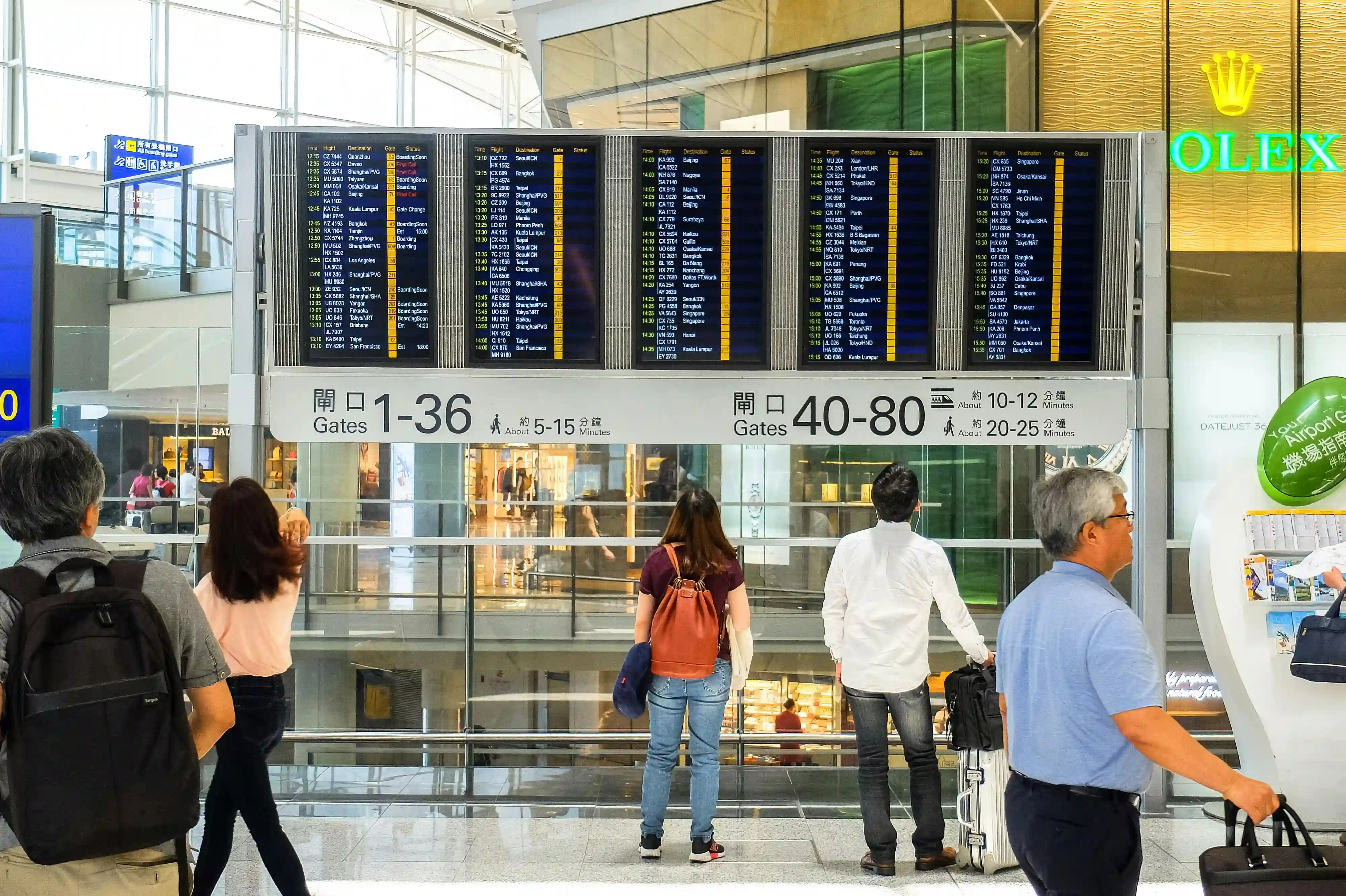Travel Tips
Will My Phone Work in Japan?
Will my phone work in Japan? Our comprehensive guide answers this question and more, covering network compatibility, eSIM technology, and essential apps.
Heading to Japan and wondering if your trusty smartphone will keep you connected? You're not alone. Let's dive into the world of mobile connectivity in the Land of the Rising Sun and ensure you stay in touch during your Japanese adventure.

Will My iPhone Work in Japan?
Good news for Apple enthusiasts: your iPhone will likely work in Japan, but there are a few caveats. Most modern iPhones (iPhone 6 and newer) support the necessary bands for Japan's networks. However, to avoid hefty roaming charges, you'll want to check with your carrier about international plans or consider a local SIM card. Remember, Japan primarily uses 4G LTE and 5G networks, so older models might have limited connectivity.
Cell Service in Japan: What to Expect
Japan boasts one of the world's most advanced mobile networks, with widespread 4G LTE coverage and rapidly expanding 5G service. The country's main carriers - NTT Docomo, au by KDDI, and SoftBank - offer reliable connections in urban areas and most rural regions. However, you might encounter spotty service in remote mountainous areas or inside some buildings with thick walls. Japan's commitment to technological advancement means you'll often find free Wi-Fi in public spaces, providing an alternative way to stay connected.
Does Verizon Work in Japan?
Verizon customers can breathe easy: your service can work in Japan, but it comes at a price. Verizon offers international roaming through its TravelPass feature, which allows you to use your domestic plan abroad for a daily fee. While this is convenient, it can be costly for longer trips. Alternatively, you can opt for Verizon's monthly international plan or unlock your phone to use a local Japanese SIM card for potentially more affordable rates.
Does T-Mobile Work in Japan?
T-Mobile users are in luck when it comes to international travel. Many T-Mobile plans include free international data and texting in over 210 countries, including Japan. While this data is often at slower 2G or 3G speeds, it's sufficient for basic tasks like messaging and light web browsing. For faster speeds or if your plan doesn't include international service, T-Mobile offers additional international passes or the option to use a local SIM.
How to Use Your Phone in Japan
Ready to explore Japan without losing touch with the world? We've got you covered. Let's walk through the best ways to keep your phone buzzing during your Japanese adventure, with a special spotlight on the game-changing eSIM technology.
Step 1: Ensure Your Phone is Japan-Ready
Before you pack your bags:
Unlock your phone (if it isn't already)
Verify compatibility with Japanese networks (2100 MHz for 3G, 800, 1500, 1800, 2100 MHz for 4G LTE)
Confirm your phone supports GSM (most modern devices do)
Step 2: Pick Your Connection Method
Get an eSIM for Japan
Local SIM Card: Grab one at the airport, electronics stores, or convenience stores
Pocket Wi-Fi: Great for powering multiple devices
International Roaming: Convenient but typically pricier
eSIM: The Smart Choice for Japan
eSIM technology is revolutionizing international connectivity, and it's perfect for your Japan trip. Here's why we love it:
No physical SIM card needed
Set up from the comfort of your home
Keep your regular number active
Often more budget-friendly than traditional roaming
To use an eSIM in Japan:
Check if your phone supports eSIM
Choose a provider (we recommend exploring options like Airalo or Ubigi)
Buy and download your Japan eSIM before takeoff
Activate with a few taps once you land in Japan
Step 3: Download Essential Japan Apps
Boost your Japan experience with these must-have apps:
Google Translate or iTranslate for language support
Japan Transit Planner (like Hyperdia or Navitime) for smooth travels
Maps.me for offline navigation
A reliable VPN to access content from home
Step 4: Optimize Your Phone Settings
Once you're on Japanese soil:
Turn on airplane mode
Enable Wi-Fi and Bluetooth
Activate data roaming if using eSIM or local SIM
Let your phone automatically choose a network
Step 5: Stay Cyber-Secure
While Japan is generally safe, it's smart to protect your digital life:
Stick to secure Wi-Fi networks or your own data connection
Use two-factor authentication for important accounts
Avoid accessing sensitive info on public Wi-Fi
By following these steps, you'll turn your phone into the ultimate Japan travel companion. Whether you go for the cutting-edge convenience of an eSIM or another method, you'll be all set to navigate, translate, and share your amazing experiences in real-time.
Phone Service in Japan for Tourists
Tourists have multiple options for staying connected in Japan. Short-term visitors often find renting a pocket Wi-Fi device most convenient, as it provides reliable internet access for multiple devices without the need to swap SIM cards. For those preferring to use their own phones, prepaid SIM cards are widely available and offer data-only or data-and-voice plans. Major tourist areas and many hotels offer free Wi-Fi, but having your own connection ensures you're always able to access maps, translation services, and travel information on the go.
What Do Japanese Phone Numbers Look Like?
Japanese phone numbers follow a distinct format that's helpful to understand. They typically consist of 10 or 11 digits, starting with an area code. For example, Tokyo numbers begin with '03', while Osaka uses '06'. Mobile numbers usually start with '070', '080', or '090'. A typical format might be: XX-XXXX-XXXX for landlines or 0X0-XXXX-XXXX for mobiles. When calling from abroad, you'll need to add Japan's country code (+81) and drop the initial '0'. Familiarizing yourself with this format can make navigating communication in Japan much smoother.
Similar readings
Roamless eSIM works in 0 destinations
Fast mobile data. No speed limits. Hotspot-enabled. Multiple operators.
Heading to Japan and wondering if your trusty smartphone will keep you connected? You're not alone. Let's dive into the world of mobile connectivity in the Land of the Rising Sun and ensure you stay in touch during your Japanese adventure.

Will My iPhone Work in Japan?
Good news for Apple enthusiasts: your iPhone will likely work in Japan, but there are a few caveats. Most modern iPhones (iPhone 6 and newer) support the necessary bands for Japan's networks. However, to avoid hefty roaming charges, you'll want to check with your carrier about international plans or consider a local SIM card. Remember, Japan primarily uses 4G LTE and 5G networks, so older models might have limited connectivity.
Cell Service in Japan: What to Expect
Japan boasts one of the world's most advanced mobile networks, with widespread 4G LTE coverage and rapidly expanding 5G service. The country's main carriers - NTT Docomo, au by KDDI, and SoftBank - offer reliable connections in urban areas and most rural regions. However, you might encounter spotty service in remote mountainous areas or inside some buildings with thick walls. Japan's commitment to technological advancement means you'll often find free Wi-Fi in public spaces, providing an alternative way to stay connected.
Does Verizon Work in Japan?
Verizon customers can breathe easy: your service can work in Japan, but it comes at a price. Verizon offers international roaming through its TravelPass feature, which allows you to use your domestic plan abroad for a daily fee. While this is convenient, it can be costly for longer trips. Alternatively, you can opt for Verizon's monthly international plan or unlock your phone to use a local Japanese SIM card for potentially more affordable rates.
Does T-Mobile Work in Japan?
T-Mobile users are in luck when it comes to international travel. Many T-Mobile plans include free international data and texting in over 210 countries, including Japan. While this data is often at slower 2G or 3G speeds, it's sufficient for basic tasks like messaging and light web browsing. For faster speeds or if your plan doesn't include international service, T-Mobile offers additional international passes or the option to use a local SIM.
How to Use Your Phone in Japan
Ready to explore Japan without losing touch with the world? We've got you covered. Let's walk through the best ways to keep your phone buzzing during your Japanese adventure, with a special spotlight on the game-changing eSIM technology.
Step 1: Ensure Your Phone is Japan-Ready
Before you pack your bags:
Unlock your phone (if it isn't already)
Verify compatibility with Japanese networks (2100 MHz for 3G, 800, 1500, 1800, 2100 MHz for 4G LTE)
Confirm your phone supports GSM (most modern devices do)
Step 2: Pick Your Connection Method
Get an eSIM for Japan
Local SIM Card: Grab one at the airport, electronics stores, or convenience stores
Pocket Wi-Fi: Great for powering multiple devices
International Roaming: Convenient but typically pricier
eSIM: The Smart Choice for Japan
eSIM technology is revolutionizing international connectivity, and it's perfect for your Japan trip. Here's why we love it:
No physical SIM card needed
Set up from the comfort of your home
Keep your regular number active
Often more budget-friendly than traditional roaming
To use an eSIM in Japan:
Check if your phone supports eSIM
Choose a provider (we recommend exploring options like Airalo or Ubigi)
Buy and download your Japan eSIM before takeoff
Activate with a few taps once you land in Japan
Step 3: Download Essential Japan Apps
Boost your Japan experience with these must-have apps:
Google Translate or iTranslate for language support
Japan Transit Planner (like Hyperdia or Navitime) for smooth travels
Maps.me for offline navigation
A reliable VPN to access content from home
Step 4: Optimize Your Phone Settings
Once you're on Japanese soil:
Turn on airplane mode
Enable Wi-Fi and Bluetooth
Activate data roaming if using eSIM or local SIM
Let your phone automatically choose a network
Step 5: Stay Cyber-Secure
While Japan is generally safe, it's smart to protect your digital life:
Stick to secure Wi-Fi networks or your own data connection
Use two-factor authentication for important accounts
Avoid accessing sensitive info on public Wi-Fi
By following these steps, you'll turn your phone into the ultimate Japan travel companion. Whether you go for the cutting-edge convenience of an eSIM or another method, you'll be all set to navigate, translate, and share your amazing experiences in real-time.
Phone Service in Japan for Tourists
Tourists have multiple options for staying connected in Japan. Short-term visitors often find renting a pocket Wi-Fi device most convenient, as it provides reliable internet access for multiple devices without the need to swap SIM cards. For those preferring to use their own phones, prepaid SIM cards are widely available and offer data-only or data-and-voice plans. Major tourist areas and many hotels offer free Wi-Fi, but having your own connection ensures you're always able to access maps, translation services, and travel information on the go.
What Do Japanese Phone Numbers Look Like?
Japanese phone numbers follow a distinct format that's helpful to understand. They typically consist of 10 or 11 digits, starting with an area code. For example, Tokyo numbers begin with '03', while Osaka uses '06'. Mobile numbers usually start with '070', '080', or '090'. A typical format might be: XX-XXXX-XXXX for landlines or 0X0-XXXX-XXXX for mobiles. When calling from abroad, you'll need to add Japan's country code (+81) and drop the initial '0'. Familiarizing yourself with this format can make navigating communication in Japan much smoother.
Heading to Japan and wondering if your trusty smartphone will keep you connected? You're not alone. Let's dive into the world of mobile connectivity in the Land of the Rising Sun and ensure you stay in touch during your Japanese adventure.

Will My iPhone Work in Japan?
Good news for Apple enthusiasts: your iPhone will likely work in Japan, but there are a few caveats. Most modern iPhones (iPhone 6 and newer) support the necessary bands for Japan's networks. However, to avoid hefty roaming charges, you'll want to check with your carrier about international plans or consider a local SIM card. Remember, Japan primarily uses 4G LTE and 5G networks, so older models might have limited connectivity.
Cell Service in Japan: What to Expect
Japan boasts one of the world's most advanced mobile networks, with widespread 4G LTE coverage and rapidly expanding 5G service. The country's main carriers - NTT Docomo, au by KDDI, and SoftBank - offer reliable connections in urban areas and most rural regions. However, you might encounter spotty service in remote mountainous areas or inside some buildings with thick walls. Japan's commitment to technological advancement means you'll often find free Wi-Fi in public spaces, providing an alternative way to stay connected.
Does Verizon Work in Japan?
Verizon customers can breathe easy: your service can work in Japan, but it comes at a price. Verizon offers international roaming through its TravelPass feature, which allows you to use your domestic plan abroad for a daily fee. While this is convenient, it can be costly for longer trips. Alternatively, you can opt for Verizon's monthly international plan or unlock your phone to use a local Japanese SIM card for potentially more affordable rates.
Does T-Mobile Work in Japan?
T-Mobile users are in luck when it comes to international travel. Many T-Mobile plans include free international data and texting in over 210 countries, including Japan. While this data is often at slower 2G or 3G speeds, it's sufficient for basic tasks like messaging and light web browsing. For faster speeds or if your plan doesn't include international service, T-Mobile offers additional international passes or the option to use a local SIM.
How to Use Your Phone in Japan
Ready to explore Japan without losing touch with the world? We've got you covered. Let's walk through the best ways to keep your phone buzzing during your Japanese adventure, with a special spotlight on the game-changing eSIM technology.
Step 1: Ensure Your Phone is Japan-Ready
Before you pack your bags:
Unlock your phone (if it isn't already)
Verify compatibility with Japanese networks (2100 MHz for 3G, 800, 1500, 1800, 2100 MHz for 4G LTE)
Confirm your phone supports GSM (most modern devices do)
Step 2: Pick Your Connection Method
Get an eSIM for Japan
Local SIM Card: Grab one at the airport, electronics stores, or convenience stores
Pocket Wi-Fi: Great for powering multiple devices
International Roaming: Convenient but typically pricier
eSIM: The Smart Choice for Japan
eSIM technology is revolutionizing international connectivity, and it's perfect for your Japan trip. Here's why we love it:
No physical SIM card needed
Set up from the comfort of your home
Keep your regular number active
Often more budget-friendly than traditional roaming
To use an eSIM in Japan:
Check if your phone supports eSIM
Choose a provider (we recommend exploring options like Airalo or Ubigi)
Buy and download your Japan eSIM before takeoff
Activate with a few taps once you land in Japan
Step 3: Download Essential Japan Apps
Boost your Japan experience with these must-have apps:
Google Translate or iTranslate for language support
Japan Transit Planner (like Hyperdia or Navitime) for smooth travels
Maps.me for offline navigation
A reliable VPN to access content from home
Step 4: Optimize Your Phone Settings
Once you're on Japanese soil:
Turn on airplane mode
Enable Wi-Fi and Bluetooth
Activate data roaming if using eSIM or local SIM
Let your phone automatically choose a network
Step 5: Stay Cyber-Secure
While Japan is generally safe, it's smart to protect your digital life:
Stick to secure Wi-Fi networks or your own data connection
Use two-factor authentication for important accounts
Avoid accessing sensitive info on public Wi-Fi
By following these steps, you'll turn your phone into the ultimate Japan travel companion. Whether you go for the cutting-edge convenience of an eSIM or another method, you'll be all set to navigate, translate, and share your amazing experiences in real-time.
Phone Service in Japan for Tourists
Tourists have multiple options for staying connected in Japan. Short-term visitors often find renting a pocket Wi-Fi device most convenient, as it provides reliable internet access for multiple devices without the need to swap SIM cards. For those preferring to use their own phones, prepaid SIM cards are widely available and offer data-only or data-and-voice plans. Major tourist areas and many hotels offer free Wi-Fi, but having your own connection ensures you're always able to access maps, translation services, and travel information on the go.
What Do Japanese Phone Numbers Look Like?
Japanese phone numbers follow a distinct format that's helpful to understand. They typically consist of 10 or 11 digits, starting with an area code. For example, Tokyo numbers begin with '03', while Osaka uses '06'. Mobile numbers usually start with '070', '080', or '090'. A typical format might be: XX-XXXX-XXXX for landlines or 0X0-XXXX-XXXX for mobiles. When calling from abroad, you'll need to add Japan's country code (+81) and drop the initial '0'. Familiarizing yourself with this format can make navigating communication in Japan much smoother.
Travel Tips
Will My Phone Work in Japan?
Will my phone work in Japan? Our comprehensive guide answers this question and more, covering network compatibility, eSIM technology, and essential apps.
Will my phone work in Japan? Our comprehensive guide answers this question and more, covering network compatibility, eSIM technology, and essential apps.


























